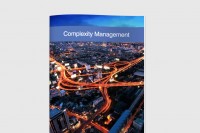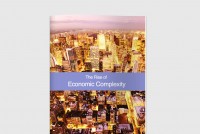The VUCA World
A basic premise of complexity management would be that over the past few decades with the rise of information technology, financialization, globalization, and sustainability the world has gone from connected to hyperconnected, from linear to nonlinear, from a simpler system to a more complex system, and that strategy must, in turn, respond to this change in context to be successful.
A traditional approach to strategy works fine until we turn up the volatility, uncertainty, and complexity within the environment. Turning a rapidly changing external environment to our advantage requires a recalibration of many dimensions across how we develop, deploy and deliver our strategies, and this is where complexity management finds its application in offering us an alternative paradigm with which to lead organizations. So let’s take a quick look at the different dimensions of the VUCA world and the response complexity management offers to this challenging environment.
Firstly Volatility: In systemically volatile environments, change is a constant and our strategy needs to evolve from resisting it to working with it. This means creating organizations that are resilient through their agility and capacity for adaptation. The strategic emphasis shifts from creating fixed welldefined goals and plans to trying to create agile organizations led by a clarity of vision and effective communications, so that it can be very clear about its values and objective but very flexible in how it implements capabilities and achieves its vision.
Secondly Uncertainty: Uncertainty is the inability to know everything fully. This uncertainty is derived from the large number of elements within the system, their nonlinear interactions and their capacity to adapt to local events as they evolve over time, this means that in these complex systems the future emerges, the outcome to an emergent process can not be known beforehand. Trying to compute the actual details and define a single future scenario is a lost endeavor. In environments where uncertainty is pervasive, our traditional riskbased analysis of the future breaks down. The only way to respond to this is to perform multiple simulations and experiments that will allow us to explore how things will really play out on the ground and to maintain a diverse and complementary system that is capable of responding to a number of different possible environmental conditions.










